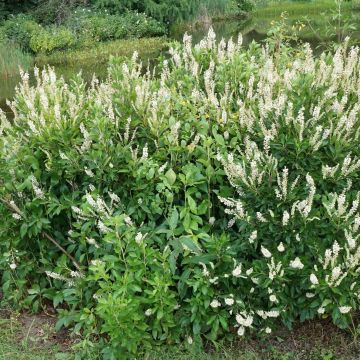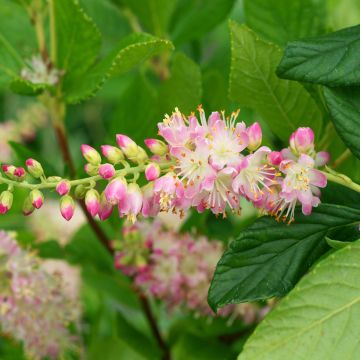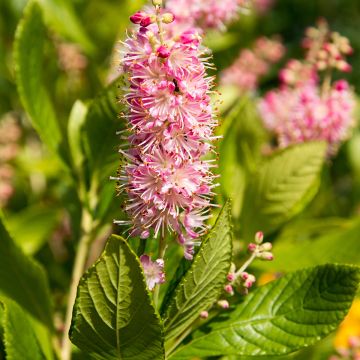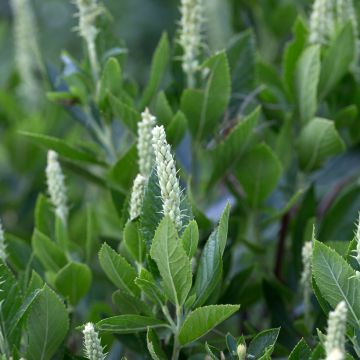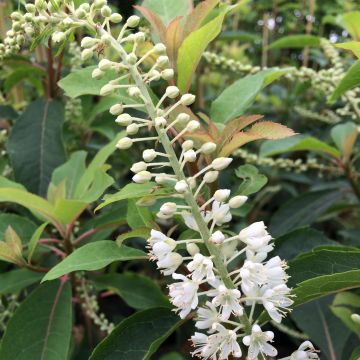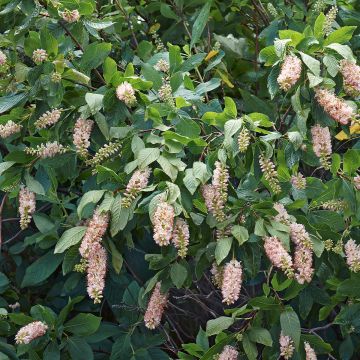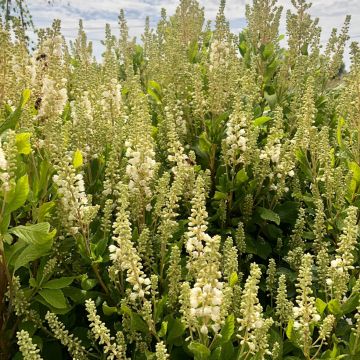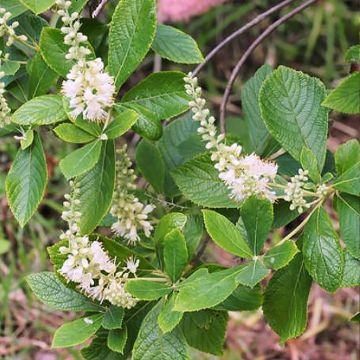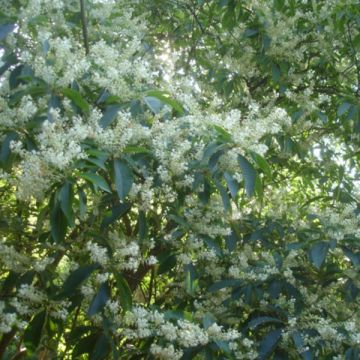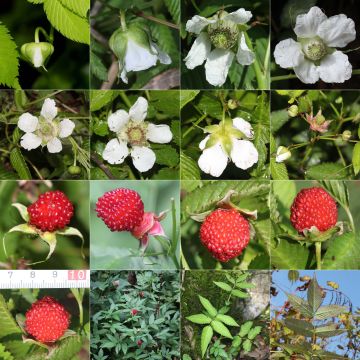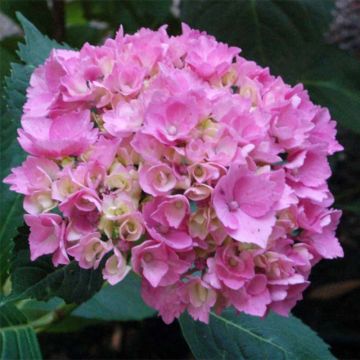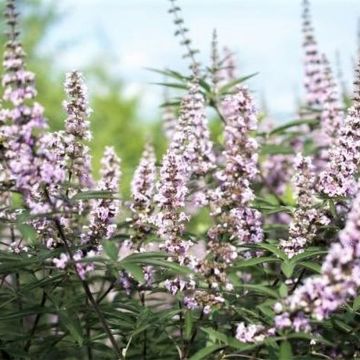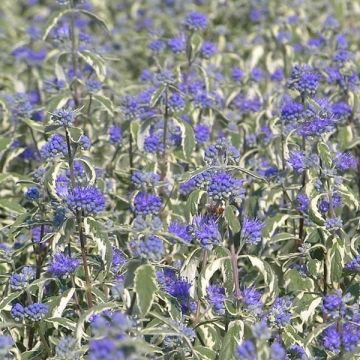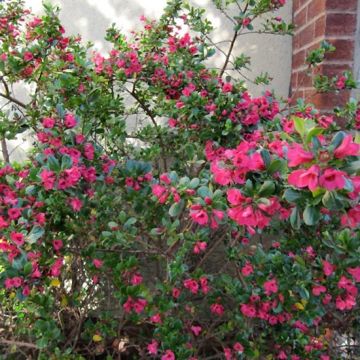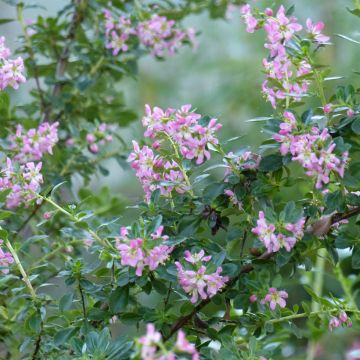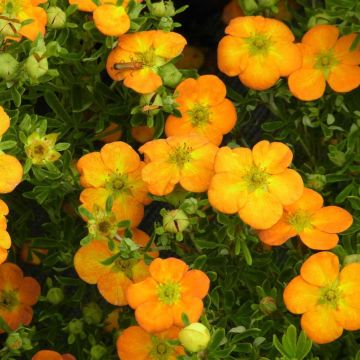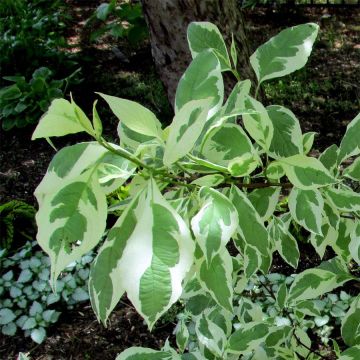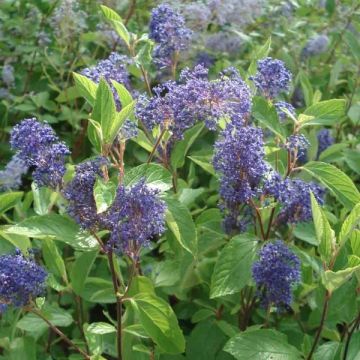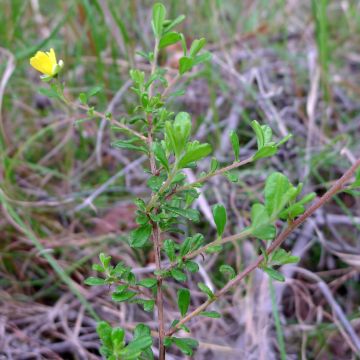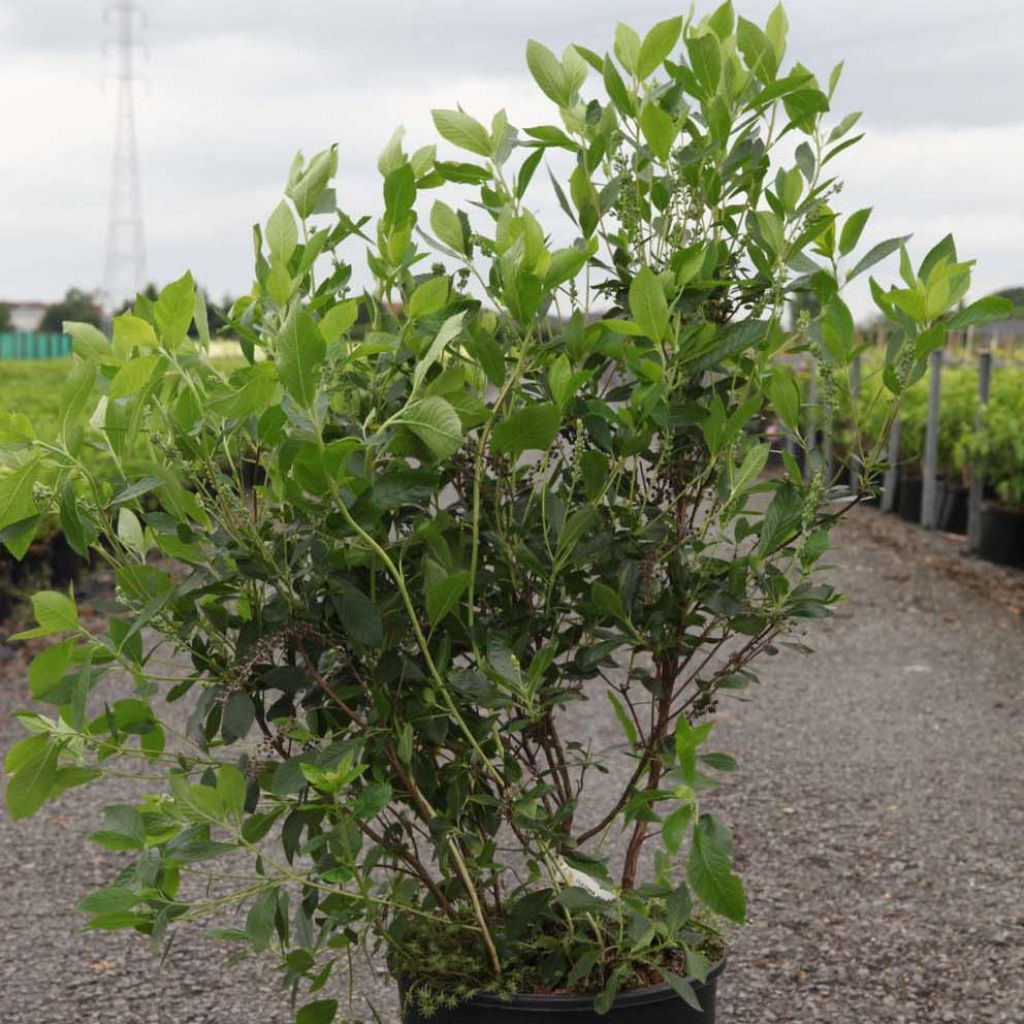

Clethra alnifolia Vanilla Spice
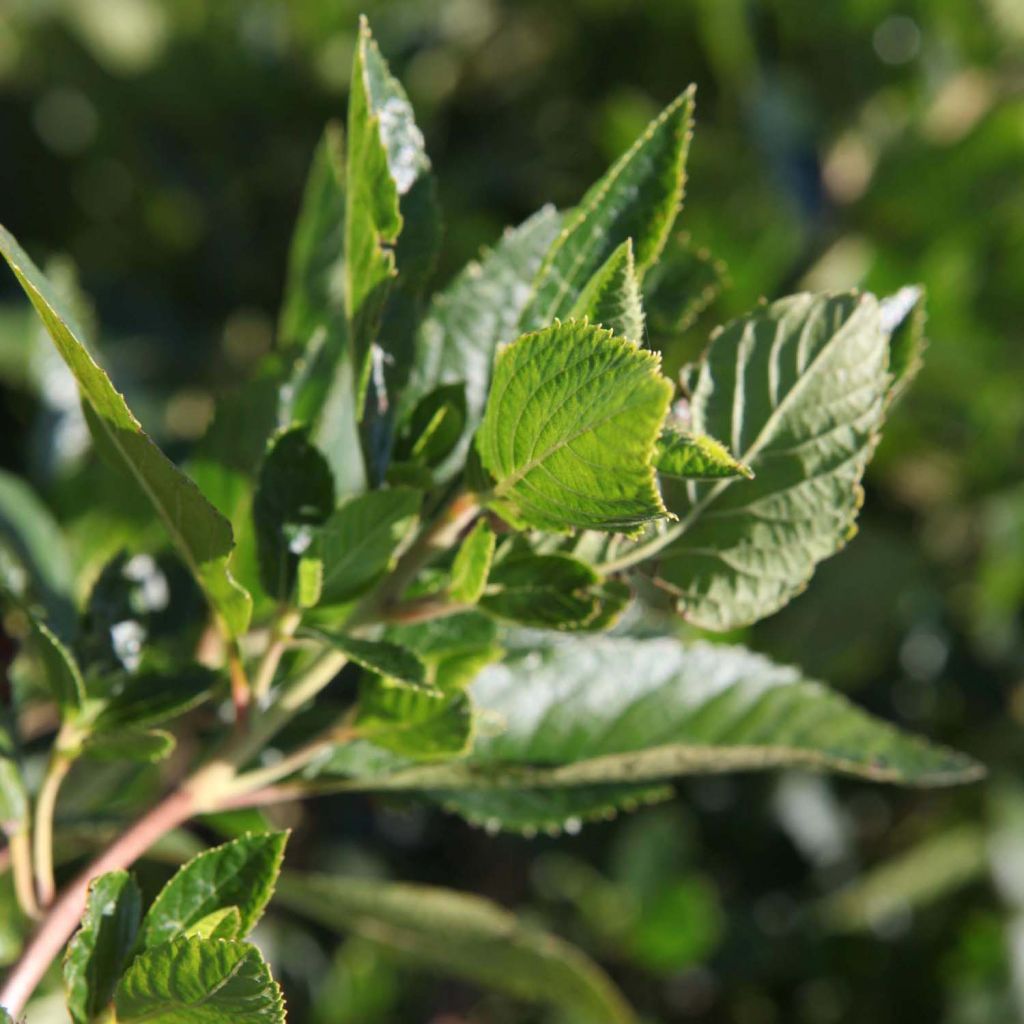

Clethra alnifolia Vanilla Spice
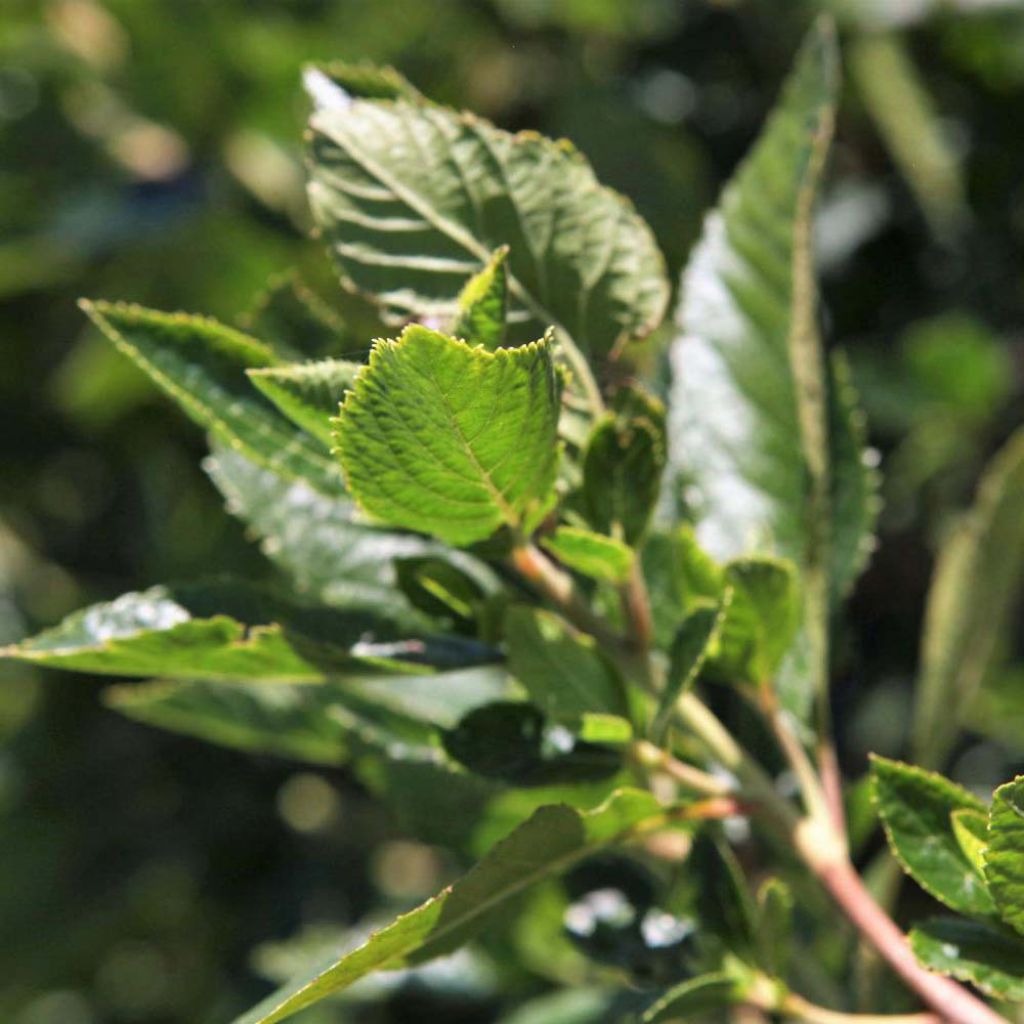

Clethra alnifolia Vanilla Spice
Clethra alnifolia Vanilla Spice
Clethra alnifolia Vanilla Spice
Panicled White Alder, Sweet Pepper Bush
This item cannot be shipped to the selected country
Delivery charge from €5.90
More information
Schedule delivery date,
and select date in basket
This plant carries a 24 months recovery warranty
More information
We guarantee the quality of our plants for a full growing cycle, and will replace at our expense any plant that fails to recover under normal climatic and planting conditions.
From €5.90 for pickup delivery and €6.90 for home delivery
Express home delivery from €8.90.

Does this plant fit my garden?
Set up your Plantfit profile →
Description
Clethra alnifolia 'Vanilla Spice' is a deciduous shrub with a bushy, upright, and rounded habit. This variety of Sweet Pepperbush is the result of American hybridisation, offering flower spikes twice as large as those of the natural species. The highly fragrant flowering occurs in July and blends with the soft green foliage in a beautiful contrast of colours. This small shrub thrives in shaded exposures and moist soils. It will bring long-lasting beauty to a dark area of the garden with its exceptional flowering and changing foliage. Its modest size also allows it to decorate a terrace or a balcony sheltered from the sun.
Clethra alnifolia is a small shrub that grows naturally in the swampy forests of the East Coast of the United States. It forms a small, dense, wide, rounded, and slightly spreading bush. 'Vanilla Spice' is a horticultural creation that stands out for its compact dimensions: about 1.5 m (4 ft 11 in) tall and 1.2 m (3 ft 11 in) wide. Its small size and slow growth make it ideal for filling small spaces or being grown in containers. When it is in a favourable environment, it spreads through suckers to form small groves. Its highly branched and erect branches bear deciduous foliage, consisting of slender, ovate, dentate, and glabrous leaves with strongly marked veins. They remarkably resemble those of the Alder, which is why this shrub is sometimes called White Alder. The leaves appear late in spring in shades of yellow-green and then turn soft green at maturity. In autumn, the plant takes on a yellow-orange colour before the foliage falls. In late summer and early autumn, Clethra alnifolia is adorned with large flower spikes, whose whiteness harmoniously contrasts with the freshness of the foliage. The 'Vanilla Spice' variety of Clethra alnifolia is characterised by the size of its flower spikes, which are twice as large as those of other Sweet Pepperbush varieties. The first flowers appear in July and continue blooming until September. They are arranged in spiky clusters and bear white bell-shaped flowers with feathery stamens. The flowering spreads a delightful vanilla fragrance that attracts butterflies and some birds. It is followed by decorative brown capsules that persist on the bush until mid-winter. These fruits provide valuable food for birds at a time when it is scarce.
Sweet Pepperbushes prefer shaded locations and moist, rich, loose soils with an acidic tendency. In wet areas, they form thick copses and spread through suckers without becoming invasive. They tolerate high temperatures and drought poorly and can be planted in full sun only in regions with moderately warm summers. Clethra alnifolia can tolerate completely shaded exposures, but its growth may be slower, and its flowering less abundant.
Plant Clethra alnifolia 'Vanilla Spice' in a wide hole. Mix peat or heather soil with your garden soil to lighten and acidify it. Mulch with pine bark to retain moisture and maintain a pH favourable to the plant's development. Water generously during the growing season, especially for the first two years after planting.
Prune Clethra alnifolia at the end of winter to remove dead, diseased, or broken branches. It is also advisable to remove faded flowers to avoid unnecessary fatigue for the shrub. Highly resistant to diseases and hardy (can withstand temperatures down -15 °C (5 °F)), Sweet Pepperbush 'Vanilla Spice' is pleasant to cultivate and will display its splendour with minimal care!
Clethra alnifolia 'Vanilla Spice' will provide a beautiful backdrop in a mass planting of pastel-coloured plants such as Invincibelle Smooth Hydrangea or Percy Wiseman Dwarf Rhododendron. Its soft colours will be pleasantly enhanced by the presence of shrubs with purple hues such as Bloodgood Japanese Maple. The attractive fragrance of its flowers makes it ideal to be placed near a living area or a passing place. This small Sweet Pepperbush can also be planted on a slope, contributing to its stabilisation and vegetation thanks to its suckers. Its compact size makes it suitable for container cultivation and allows it to beautifully adorn a shaded terrace or balcony, provided it is regularly watered during the growing season.
Report an error about the product description
Clethra alnifolia Vanilla Spice in pictures
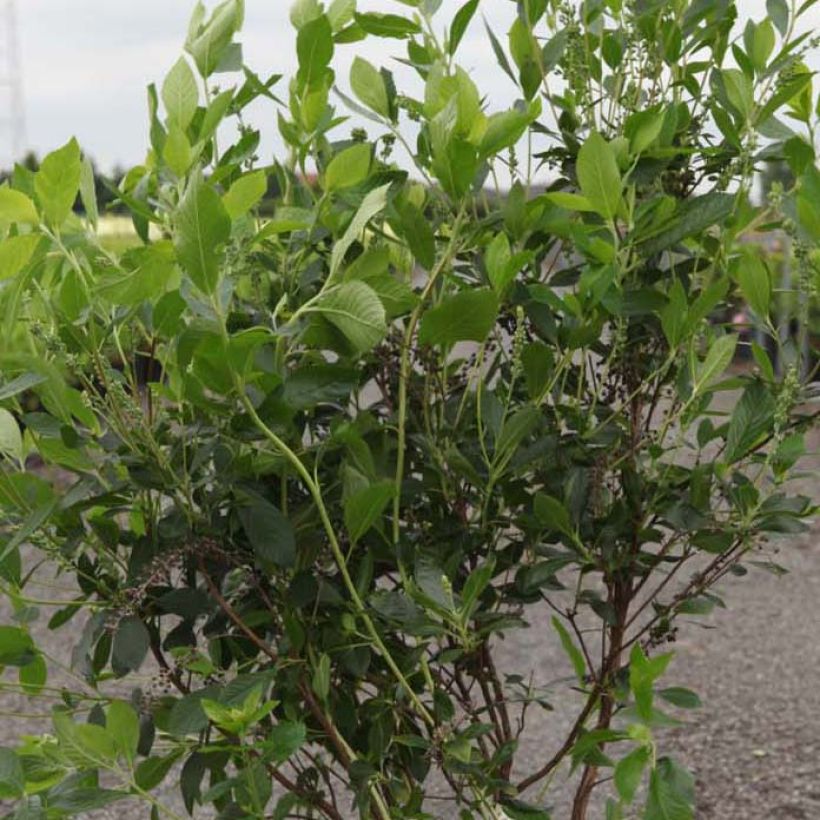

Plant habit
Flowering
Foliage
Botanical data
Clethra
alnifolia
Vanilla Spice
Clethraceae
Panicled White Alder, Sweet Pepper Bush
Cultivar or hybrid
Other Clethra
Planting and care
Clethra alnifolia plants are native to the swampy forests of boreal America. They therefore appreciate shaded situations and cool, rich, and loose soils with an acidic tendency. They tolerate high heat and drought poorly. They can be planted in full sun only in regions with moderately hot summers. Clethra alnifolia can tolerate completely shaded exposures, but its growth may be slowed down and its flowering less abundant.
Plant Clethra alnifolia 'Vanilla Spice' in a hole of significant width. Mix turf or heath soil with your garden soil to lighten and acidify the soil. Mulching with pine bark will help maintain good moisture and a pH favourable to the plant's good development. Water generously during the growing season, especially during the first two years after planting.
Prune Clethra alnifolia at the end of winter to remove dead, diseased, or broken branches. It is also preferable to prune faded flowers at the end of flowering to avoid unnecessarily tiring the plant.
Very resistant to diseases and hardy (can withstand temperatures down to -15 °C (5 °F)), Clethra alnifolia 'Vanilla Spice' is pleasant to cultivate and will offer all its splendour with minimal care!
Planting period
Intended location
Care
This item has not been reviewed yet - be the first to leave a review about it.
Summer-flowering shrubs
Haven't found what you were looking for?
Hardiness is the lowest winter temperature a plant can endure without suffering serious damage or even dying. However, hardiness is affected by location (a sheltered area, such as a patio), protection (winter cover) and soil type (hardiness is improved by well-drained soil).

Photo Sharing Terms & Conditions
In order to encourage gardeners to interact and share their experiences, Promesse de fleurs offers various media enabling content to be uploaded onto its Site - in particular via the ‘Photo sharing’ module.
The User agrees to refrain from:
- Posting any content that is illegal, prejudicial, insulting, racist, inciteful to hatred, revisionist, contrary to public decency, that infringes on privacy or on the privacy rights of third parties, in particular the publicity rights of persons and goods, intellectual property rights, or the right to privacy.
- Submitting content on behalf of a third party;
- Impersonate the identity of a third party and/or publish any personal information about a third party;
In general, the User undertakes to refrain from any unethical behaviour.
All Content (in particular text, comments, files, images, photos, videos, creative works, etc.), which may be subject to property or intellectual property rights, image or other private rights, shall remain the property of the User, subject to the limited rights granted by the terms of the licence granted by Promesse de fleurs as stated below. Users are at liberty to publish or not to publish such Content on the Site, notably via the ‘Photo Sharing’ facility, and accept that this Content shall be made public and freely accessible, notably on the Internet.
Users further acknowledge, undertake to have ,and guarantee that they hold all necessary rights and permissions to publish such material on the Site, in particular with regard to the legislation in force pertaining to any privacy, property, intellectual property, image, or contractual rights, or rights of any other nature. By publishing such Content on the Site, Users acknowledge accepting full liability as publishers of the Content within the meaning of the law, and grant Promesse de fleurs, free of charge, an inclusive, worldwide licence for the said Content for the entire duration of its publication, including all reproduction, representation, up/downloading, displaying, performing, transmission, and storage rights.
Users also grant permission for their name to be linked to the Content and accept that this link may not always be made available.
By engaging in posting material, Users consent to their Content becoming automatically accessible on the Internet, in particular on other sites and/or blogs and/or web pages of the Promesse de fleurs site, including in particular social pages and the Promesse de fleurs catalogue.
Users may secure the removal of entrusted content free of charge by issuing a simple request via our contact form.
The flowering period indicated on our website applies to countries and regions located in USDA zone 8 (France, the United Kingdom, Ireland, the Netherlands, etc.)
It will vary according to where you live:
- In zones 9 to 10 (Italy, Spain, Greece, etc.), flowering will occur about 2 to 4 weeks earlier.
- In zones 6 to 7 (Germany, Poland, Slovenia, and lower mountainous regions), flowering will be delayed by 2 to 3 weeks.
- In zone 5 (Central Europe, Scandinavia), blooming will be delayed by 3 to 5 weeks.
In temperate climates, pruning of spring-flowering shrubs (forsythia, spireas, etc.) should be done just after flowering.
Pruning of summer-flowering shrubs (Indian Lilac, Perovskia, etc.) can be done in winter or spring.
In cold regions as well as with frost-sensitive plants, avoid pruning too early when severe frosts may still occur.
The planting period indicated on our website applies to countries and regions located in USDA zone 8 (France, United Kingdom, Ireland, Netherlands).
It will vary according to where you live:
- In Mediterranean zones (Marseille, Madrid, Milan, etc.), autumn and winter are the best planting periods.
- In continental zones (Strasbourg, Munich, Vienna, etc.), delay planting by 2 to 3 weeks in spring and bring it forward by 2 to 4 weeks in autumn.
- In mountainous regions (the Alps, Pyrenees, Carpathians, etc.), it is best to plant in late spring (May-June) or late summer (August-September).
The harvesting period indicated on our website applies to countries and regions in USDA zone 8 (France, England, Ireland, the Netherlands).
In colder areas (Scandinavia, Poland, Austria...) fruit and vegetable harvests are likely to be delayed by 3-4 weeks.
In warmer areas (Italy, Spain, Greece, etc.), harvesting will probably take place earlier, depending on weather conditions.
The sowing periods indicated on our website apply to countries and regions within USDA Zone 8 (France, UK, Ireland, Netherlands).
In colder areas (Scandinavia, Poland, Austria...), delay any outdoor sowing by 3-4 weeks, or sow under glass.
In warmer climes (Italy, Spain, Greece, etc.), bring outdoor sowing forward by a few weeks.

































